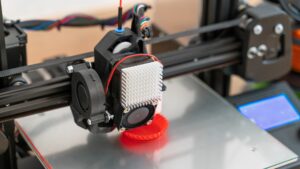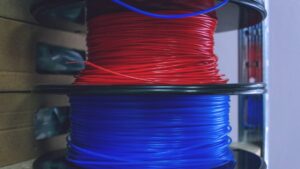
A Look at the Different Densities of 3D Printing Materials
There’s so much to learn about 3D printing materials. Come and find out what to look for when examining the different densities of 3D printing filaments.
844-810-1385
Although 3D printing is a relatively new technology, the US Army has already begun to incorporate it into numerous aspects of its operations and is searching for more methods to do so. Multiple subsectors of the army began employing 3D printing in 2012 to create crucial items for troops and other Afghan personnel. Furthermore, this printing method is used by the Army Research Lab to repair damaged and malfunctioning airplanes and certain ground vehicles. Certain communication equipment has been 3D printed by military experts for use in uniforms and other garments. Here are the top four uses of 3D printing in the military!
The army has been actively collaborating with NASA to create ways to print food, which is probably the last thing anyone outside the military would think of when talking about 3D printing. Printing food would allow it to be produced on demand, lowering the expense of feeding troops and other personnel. Even better, soldiers could customize their meals, which would raise morale while also allowing them to restore their bodies with certain vitamins and nutrients.
The transition from using traditional methods of manufacturing clothing to 3D printing is being made by researchers who design and manufacture gear for the United States Army. Armor systems, helmet covers, field clothes, and even chemical and biological protection gear are all becoming focal points of clothing research and implementation initiatives. Combat outfits with significantly improved flexibility in regions where movement can be restricted, such as joints and insteps, would also be possible thanks to 3D printing.
When it comes to medical equipment, army researchers have praised 3D printing. It enables the fabrication of prototypes that obviate the need for many of the logistical procedures required in the traditional manufacturing of medical equipment. The time it takes to complete projects involving equipment design and manufacturing is reduced by half.
Although it may sound morbid, printing human skin is one of the most advanced uses of 3D printing that experts have devised to date. Researchers are on the verge of developing a method to 3D print human skin for healing wounded soldiers, which is still in the testing phase, like many other 3D printing uses. Though it will almost certainly be contentious if it ever goes live, the benefits—such as the ability to save lives and improve the quality of life for war survivors—are nearly irresistible.
We hope you have enjoyed our recap of the top uses of 3D printing in the military! If you are looking to print in a specialty filament such as glass nylon fiber or Kevlar-filled nylon, be sure to reach out to Filamatrix today!

There’s so much to learn about 3D printing materials. Come and find out what to look for when examining the different densities of 3D printing filaments.

Those interested in 3D printing have a lot to learn on how to use the system properly. Find out what you need to know about 3D printing and humidity levels.

3D printing has many variables that both beginners and experts need to know. Find out what effects temperature has on 3D printer filament.
Get professional insights, industry news, and our latest deals